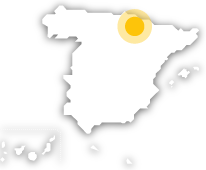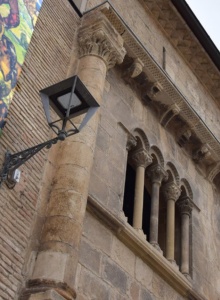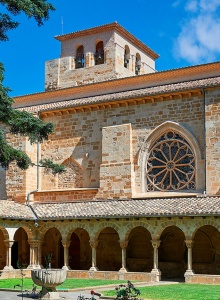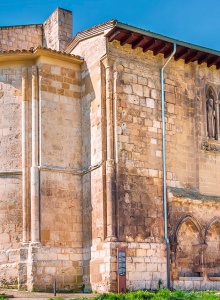The Camino de Santiago, a World Heritage Site, passes through Navarre and leads us to Estella-Lizarra.
This town, crossed by the Ega River, has a medieval historic centre where Romanesque and Gothic buildings tell us of its historical splendour.
The capital of the Tierra Estella region has its origins in Roman and Vasconian settlements, but it was the Navarrese king Sancho Ramírez who founded the present-day city to accommodate the many pilgrims travelling to Santiago. Its location on the Camino de Santiago and the fact that it became a royal court contributed to its economic prosperity throughout the Middle Ages.
Romanesque art
Authentic medieval streets lead us to gems of Romanesque architecture. At the top of a large staircase is the Cistercian church of San Pedro de la Rúa. The Romanesque elements of its structure and decoration are evident in its facade and cloister. Semi-circular arches, along with floral and figurative decorations, lead to the narrative capitals of its cloister, a beautiful spot to walk around and admire the exquisite craftsmanship of biblical scenes. In general, the neighborhood in which it is located, around San Nicolás and Curtidores streets, is the most beautiful and monumental in the town.It is worth stopping at the Palace of the Kings of Navarre, also known as the Palace of the Dukes of Granada de Ega. This is a beautiful example of Romanesque civil architecture, unique due to its scarce presence. In addition to its two levels, the cloister features a remarkable historiated capital depicting an episode from the Legend of Roland, a rare motif in Romanesque art. Its other capitals feature typical Cistercian plant decorations. It currently houses the Gustavo de Maeztu Museum.One of the representative Romanesque doorways is found in the Church of San Miguel. The figure of the Pantocrator (representation of Jesus Christ in majesty) inside the mandorla and the tetramorphs (figures of the four evangelists) are its most representative elements, characteristic of late Romanesque architecture. A Flemish Gothic sculpture of Saint Michael and an 18th-century altarpiece are the key highlights inside.Within the Gothic architecture of Estella-Lizarra, the Church of the Holy Sepulchre and the Convent of Santo Domingo are particularly significant. On the door of the Holy Sepulchre showcases the transition between late Romanesque and early Gothic styles. Twelve archivolts flanked by two rows of apostles and a tympanum with sculptures depicting the life and death of Christ are the most striking features of the doorway. The convent has a single elongated nave.The historic centre, on both sides of the Ega River and connected by the Puente de la Cárcel, also has Renaissance palaces such as the San Cristóbal Palace (today the Fray Diego de Estella House of Culture), as well as Baroque palaces such as the Palace of Justice.The Plaza de los Fueros is the heart of the city, where the traditional market is held and where the neoclassical façade of the Church of San Juan stands. The square and the surrounding streets host the medieval market, when all the vendors dress in period costumes and offer their wares as in the old days. The Convent of Recoletas, the ruins of San Pedro de Lizarra, and the Basilica of Nuestra Señora del Puy are the next stops. It is a church built in the 1950s with a Gothic-inspired modern design, housing a Gothic statue of the city's patron saint, plated in silver. The Paseo de los Llanos, parallel to the river, leads us to the Convent of Santa Clara and, toward La Rioja, to the Church of Nuestra Señora de Rocamador.











